Arts & Culture
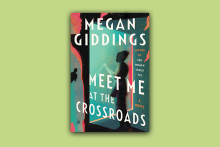
Once, a woman told me the closest thing she had to a religion was speculative fiction. Just as spiritual practices do for many believers, reading Ursula Le Guin and Octavia Butler helped her face the haunting edge of humanity’s knowledge, those parts of being alive that refuse explanation.
It’s this confrontation with mystery that Megan Giddings places at the center of her captivating novel Meet Me at the Crossroads. Seven doors appear around the world, each opening to a beautifully warped alternative dimension. Those who walk through these doors see meadows peppered with gold stones and orange deserts under purple skies — but they don’t always come back. Once people realize that the doors are “uncontrollable, unkillable and unknowable,” most ignore them or call them a hoax, aside from a few fringe religious groups. Woven with plenty of heart, this story is not so much about the nature of the unknown as the complicated ways people cope with it.
In Michigan, twins Ayanna and Olivia grow up near one of the doors, developing contrasting ideas of its meaning. Ayanna lives with their father, who raises her in a marginalized faith community that reveres the door as a divine invitation to embrace mystery. Olivia lives with their mother, a Catholic who rejects her ex-husband’s religion as heretical. Amid the tense family dynamics, the sisters remain close until, upon entering the door as teenagers, Olivia disappears.
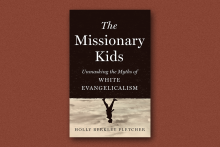
When Holly Berkley Fletcher was a child, she once heard her missionary parents “literally introduced as ‘Super Christians.’” In a white American evangelical culture that idolizes missionaries in this way, how do we speak honestly about the harm missions too often leave in their wake? In Fletcher’s new book The Missionary Kids: Unmasking the Myths of White Evangelicalism (Broadleaf Books), missionaries’ grown children offer a complex and fascinating perspective.
Fletcher—a historian, former CIA analyst, and missionary kid (MK) herself—draws on extensive research, her own experience as an MK, and surveys and interviews with fellow MKs to present a wide-ranging look at MKs’ experiences. Without losing sight of the noble intentions of most missionaries and the good work that many of them do, she pulls back the curtain on the perceived saintliness of missionaries, uncovering an alarming multitude of systemic harms. In doing so, she exposes key myths at the core of white American evangelicalism itself.
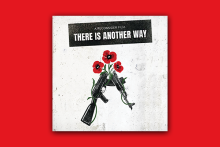
Combatants for Peace
The film There is Another Way profiles former Israeli and Palestinian combatants working toward collective liberation, showing the courage required to break cycles of hatred. “We are strong. We are fierce. But we will not meet them with their violence,” says one activist. Reconsider
The Grit of Incarnation
You Can Trust a God with Scars: Faith (and Doubt) for the Searching Soul presents a Christianity that embraces doubt and a God who understands suffering intimately. Jared Ayers uses art, scripture, music, and literature to explore “the dazzling mystery ... that the Maker stooped to become what had been made.” NavPress
Justice Can Prevail
Geared toward readers ages 8-12, A Sea of Lemon Trees: The Corrido of Roberto Alvarez, by María Dolores Águila, is a lyrical telling of the first successful school desegregation case, Alvarez v. Lemon Grove, two decades before Brown v. Board of Education. Roaring Brook Press

WHEN THE CREDITS rolled for the live-action remake of How to Train Your Dragon, I didn’t expect to think of Catholic theologian G.K. Chesterton. But it makes perfect sense. What better time to remember the words of the “prince of paradox” than during a kid’s movie about a dragon slayer who becomes a dragon friend, all with the backdrop of Iceland’s natural beauty and composer John Powell’s engrossing musical score. The film easily summoned these words from Chesterton’s 1909 essay collection Tremendous Trifles: “The world will never starve for want of wonders; but only for want of wonder.” Beauty and wonders surround us. And if we’re willing to stop and listen, such gifts can dislodge our biases and fears.
The new film focuses on Vikings who live on the isle of Berk, where they fight dragons for survival and space. The socially awkward and soft-spoken Hiccup frequently clashes with his father, Stoick, the Viking leader. Hiccup eschews Berk’s traditional masculine norms; he feels more curiosity than bloodlust toward the dragons. Yet, Hiccup gets his chance to prove his worth when he seems to kill the most feared dragon, Night Fury.
Hiccup is a normal kid: He has crushes, insecurities, and familial angst. Director Dean DeBlois knew Hiccup was joining a long line of powerful but unassuming heroes. “There’s a time-honored tradition of protagonists who are just regular kids but have a transformative bond with something amazing,” Dean told Sojourners, calling to mind Luke Skywalker from Star Wars and Elliott Taylor from E.T. But these seemingly unexceptional heroes are in fact gifted in their capacity for awe.
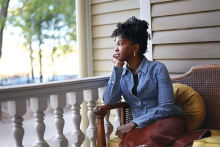
COLOR HAS LONG fascinated me. I spend days or weeks debating color choices for knitting and art projects. As a kid, I loved mail-order catalogues for their distinctively named palettes. My shelves teemed with books containing facts about color — names for various shades, how ancient pigments were made (crushed insects, plant extracts, and sea snail secretions), and the meanings of colors in different cultures. Highly conscious of racial differences, I found this last topic compelling. I would match my favorite color that week (it changed constantly) to the meanings provided and see where my tastes aligned.
While I recall few details — such as white is a color for mourning in Japan — what I remember, unfailingly, is absence. Each time I enacted this color-play-as-identification, I imagined my way into a past, land, and set of values other than my own. Because, as with most Western maps of world cultures then and now, the cultural diversity of Africa and Afro-diasporic peoples was not represented.
Imani Perry’s latest book shows this absence to be a speaking one.

Like most superhero stories, The Fantastic Four: First Steps is about the end of the world. Early in the film, the ethereal Silver Surfer (Julia Garner) arrives to warn the titular heroes that Galactus (Ralph Ineson), the cosmic being who feeds on planets, will come to eat the Earth. Like all good heroes, the Fantastic Four take action, journeying deep into space to confront Galactus on his spaceship.
Rather than spend time on the usual origin story, First Steps director Matt Shakman and his team of writers throw the viewers directly into the action. Via a television special celebrating the team’s four-year anniversary, we’re introduced to the Fantastic Four and the retro-futuristic 1960s alternate reality where they live.

The Fantastic Four: First Steps starts out with a trade proposal of the highest stakes. Galactus, the world-eating villain of Marvel’s latest reboot, will spare the Earth from his insatiable hunger in exchange for one child.
The child on the cosmic bargaining table is Franklin, son of Reed Richards, aka “Mister Fantastic” (a subdued Pedro Pascal) and Sue Storm, aka “The Invisible Woman” (Vanessa Kirby, who really gets to shine as the Fantastic Four’s leader).

In 2022, Dua Lipa appeared as a guest on The Late Show with Stephen Colbert, and asked him about the role his faith plays in his work.
“Does your faith and your comedy ever overlap?” she asked. “And does one ever win out?”
Colbert first offers a little quip (“I think, ultimately, us all being mortal, the faith will win out in the end”) and then launches into a lengthy and eloquent treatise on how Catholic teaching has trained him to wield humor as a defense against despair.

You can add Nathan Evans Fox to the list of artists who are in the country music scene without entirely being of it. Or maybe it’s better to say Fox is operating in a purer, livelier stratosphere of country music that neither needs nor wants the approval of the Nashville ruling class. So far, he’s doing just fine. His “Hillbilly Hymn (Okra and Cigarettes)” made a viral splash; a rich tune in the tradition of old Appalachian spirituals that envisions a cop-free Heaven where “the rich get scared” and “the guns are all for shootin’ clays.”

Some may want me to stay quiet, but I want to be loud. I want to scream. I want to cry. I want to embrace the full spectrum of my humanity, the same way that author Austin Channing Brown has learned to embrace herself. In her upcoming book, Full of Myself: Black Womanhood and the Journey to Self-Possession, she details this journey.

If asked to pick one Lady Gaga song to encapsulate who she is and what she stands for, you’d be hard pressed to come up with a better choice than “Born This Way.” Released in 2011, the song is a vibrant, full-body dance anthem that calls on listeners to celebrate who they are. “God makes no mistakes,” she sings in the refrain. “I’m on the right track, baby / I was born this way.” The song was immediately embraced upon release, particularly by the LGBTQ+ community.
As it turns out, this wasn’t the first time a song by that name made that kind of impact. In 1977, Motown Records released the disco anthem “I Was Born This Way,” an upbeat tune featuring a largely unknown Black gospel singer who responds to critics with a refrain that was a head-turner for its time: “I’m happy. I’m carefree. And I’m gay. I was born this way.”

Superman has always reminded me of Jesus.
In director James Gunn’s latest interpretation, Superman, Clark Kent is once again the heroic savior — thrust into battles against villainous forces and multi-dimensional threats. But this time, the stakes are political.

Released five years ago, Kristin Kobes Du Mez’s Jesus and John Wayne: How White Evangelicals Corrupted a Faith and Fractured a Nation is no orindary history book. Since it published, the treatise on militant Christian masculinity has shaped conversations about Trumpism in both Christian and secular spaces. A surprise New York Times bestseller, the book resonated with many readers who found that it clarified their own experiences of growing up in the American evangelical subculture — and it drew criticism from others who found it to be an unfair takedown of conservative Christianity.
Now, it has a theme song.

Divine Love
Loved Into Being is a tender five-part film series inviting us to rediscover our belovedness in God. James Finley — who was mentored by Thomas Merton — explores how “the divinity that shines forth out of broken places” can heal our wounds and reimagine community. The Work of the People

I’VE SPENT MOST of my life explaining to people why movies and TV shows are more than just a way to pass time. My favorite screen stories — serial or cinematic — help me connect with their creators or the depicted characters. Narratives help us make sense of our experiences and recognize ways we can help others consider their own. Jesus knew this when he told parables, using stories to communicate some of his most important teachings on how we should live generously and faithfully.
A sci-fi series about a robot who struggles to relate to human beings may seem an unlikely example of how good storytelling helps us walk through the world. But that’s what the Apple TV+ show Murderbot offers.
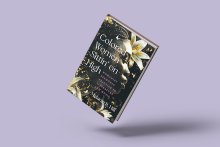
MELANIE R. HILL’S Colored Women Sittin’ on High is a love letter to Black women preachers. “From the cradle, I was surrounded by Black women preachers,” she writes. “Black women who prayed, Black women who preached and prayed, Black women who laid their hands on me and prophesied a destiny full of hope and fulfilled dreams.” For Hill, womanist sermonic practice isn’t confined to just the pulpit. These preachers include the aunts and grandmothers, artists and activists who have “created a healing and restorative space beyond the four walls of the church for the surrounding community and region.”
Hill, an assistant professor of both global racial justice and American literature at Rutgers, utilizes Alice Walker’s definition of womanism as laid out in In Search of Our Mothers’ Gardens, focusing closely on how womanists are “committed to survival and wholeness of entire people.” She addresses the ways that womanism and Black women’s literature have informed the work of Black women preachers, attending to their voices in what she terms “womanist sermonic practice.” Through this practice, Black women preachers demonstrate how to love ourselves and the Black bodies that we inhabit and how to love others and fight against systems of oppression.

MICHAEL ALBERTUS’ THESIS is both simple and grand: “Land is power.” From the earliest settlements of Mesopotamia to the land reforms of Communist China, Albertus insists that control of land has played a central role in intensifying economic disenfranchisement, ecological destruction, and racial and gender inequality. Too often, a minority has centralized land to plunder for resources, no matter the cost.
In Land Power, Albertus, a professor of political science at the University of Chicago, calls the past two centuries of large social redistributions of land the “Great Reshuffle.” These transformations, which continue today, have taken various forms.
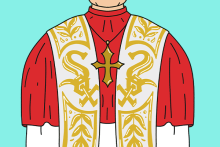
SHORTLY AFTER THE Vatican announced that Cardinal Robert Francis Prevost, a Chicago native, would be the next pope, the Cubs changed the iconic Wrigley Field sign to read, “Hey, Chicago, He’s a Cubs fan!” Then Pope Leo’s brother John refuted the claim. Apparently, Leo loves the White Sox, which is convenient, given that their colors more closely match the papal vestments. While this revelation is a big loss for the Cubs (they’re used to that, fortunately), it’s still a huge win for the city of Chicago. In June, Chicagoans (even Cubs fans!) swarmed to the White Sox’ Rate Field to hear Pope Leo address his hometown’s faithful via Jumbotron in what Chicago Cardinal Blase J. Cupich called “the sermon on the mound.”
Clearly, the new pope’s love of the Windy City runs deep, so we’ve put together a list of hometown facts about Pope Leo (Chicago Man) XIV. While all unverified by the Vatican, some truth could be hidden here. Stranger things have happened: a man on the moon, an American in the popemobile.
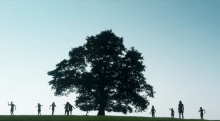
In 2002, director Danny Boyle and screenwriter Alex Garland released a post-apocalyptic horror movie that would redefine the zombie genre forever. 28 Days Later was not only ambitious for its experimental cinematography and reliance on relatively obscure actors, but also because of its critical commentary on violence and militarism. Boyle and Garland have partnered up again for the newest installment in the 28 Days Later film series, with the release 28 Years Later (now playing in theaters).
There’s nothing wrong with a gross and scary zombie movie that just stops there, but the 28 Days Later film series offers more than jump scares and blood-barfing, fast-moving zombies, which are called “infected” in the films.
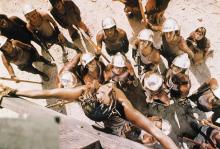
MORE THAN FIVE decades ago, two young Brits with dreams of writing musicals came up with the audacious idea of a rock opera about the Passion of Jesus Christ, told from the point of view of Jesus’ betrayer, Judas Iscariot. From the very moment composer Andrew Lloyd Webber and songwriter Tim Rice proposed it, Jesus Christ Superstar provoked both adulation and condemnation. And five decades have done nothing to diminish either the show’s fire or the intensity of audience reactions.
In August, the Hollywood Bowl will host the musical with another innovative twist: Wicked’s Cynthia Erivo plays Jesus and rock star Adam Lambert takes on Judas, in a one-weekend-only production directed by Tony and Emmy Award winner Sergio Trujillo. Some have already condemned the production for giving a queer Black woman the role of Jesus, decrying it as “intentionally blasphemous” — a complaint that has been made about various aspects of the show (including its casting) from the beginning. But the show’s actual history reveals that Superstar has been anything but a blight upon Christianity. Generations of artists have found within it fertile ground to reflect on faith and justice, sacrifice and society.